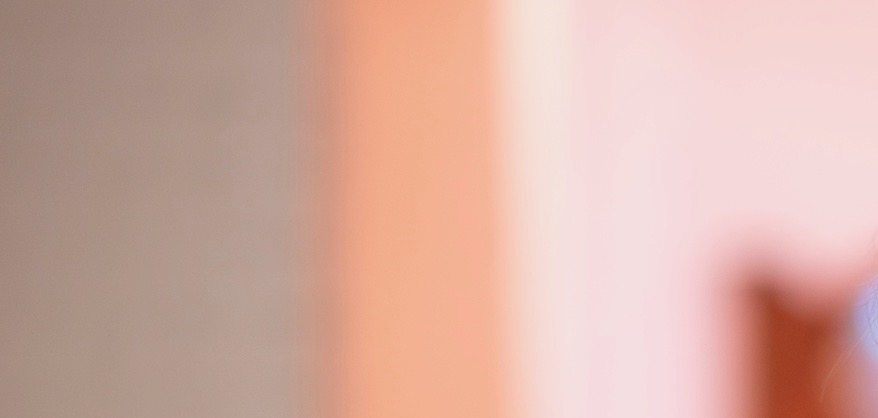
LaseMD 1927nm resurfacing treatment
- Non-ablative resurfacing laser
- Addresses most skin surface imperfections
- Customisable for all skin types and tolerance levels
- More powerful than Fraxel
- Quick treatment sessions
- More comfortable than older resurfacing technologies
- Minimal downtime (3-5 days)
- Delivers fast and consistent results
- Safe for use year-round
Before & After
Before and after 1 session with LaseMD Ultra 1927nm laser resurfacing (medium density). Note improvement in the skin pigmentation, texture, wrinkles and overall tightness.
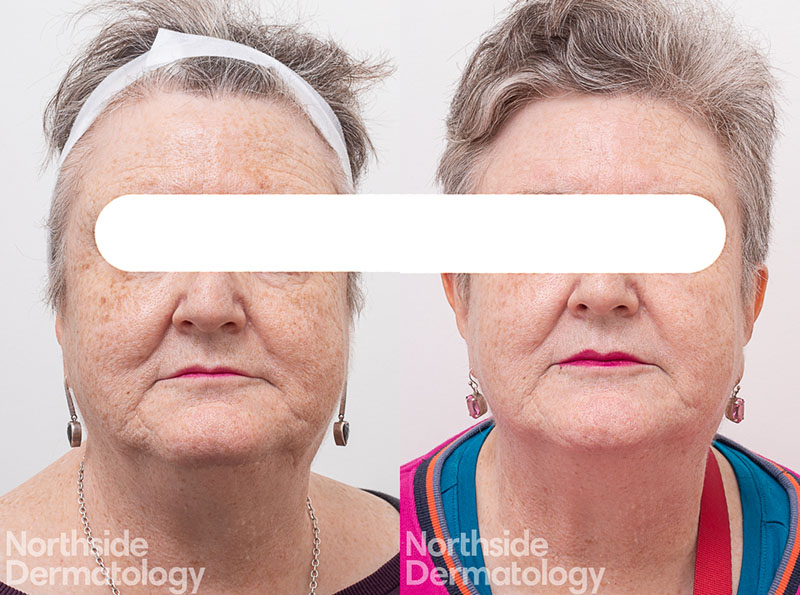
LaseMD Ultra 1927nm thulium laser resurfacing. Before and after photos 6 weeks after 1 treatment (medium density). Note improvement in skin clarity, texture and expression lines.
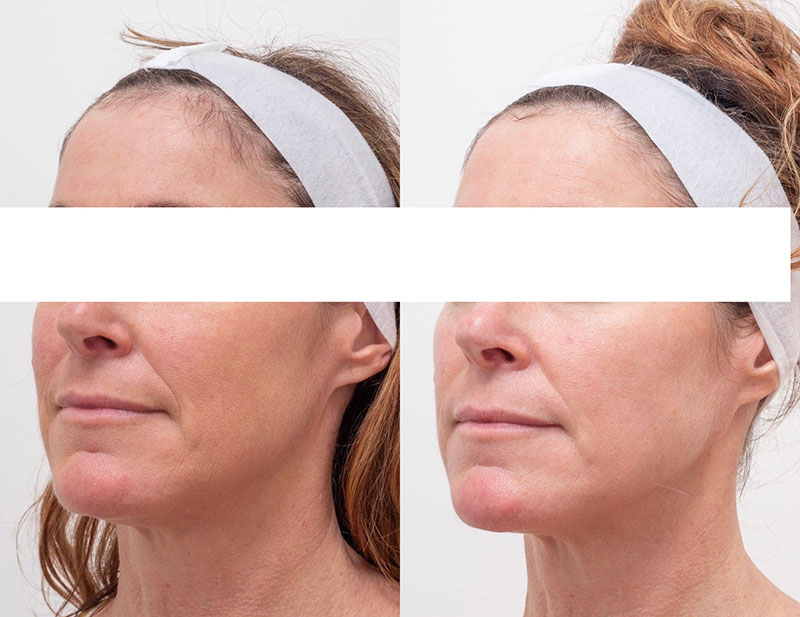
LaseMD Ultra 1927nm thulium laser resurfacing. Before and after photos 4 weeks after 1 treatment (high density). Note improvement in pigmentation, skin texture and wrinkles.
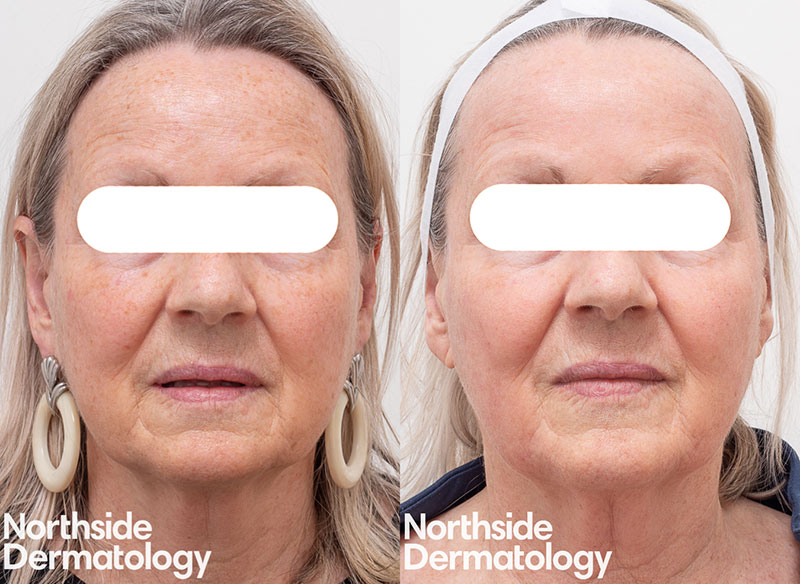
Before and after 1 treatment with LaseMD Ultra 1927nm high density for rejuvenation (high density). Note the improvement in skin texture, tightness, pigmentation and radiance.
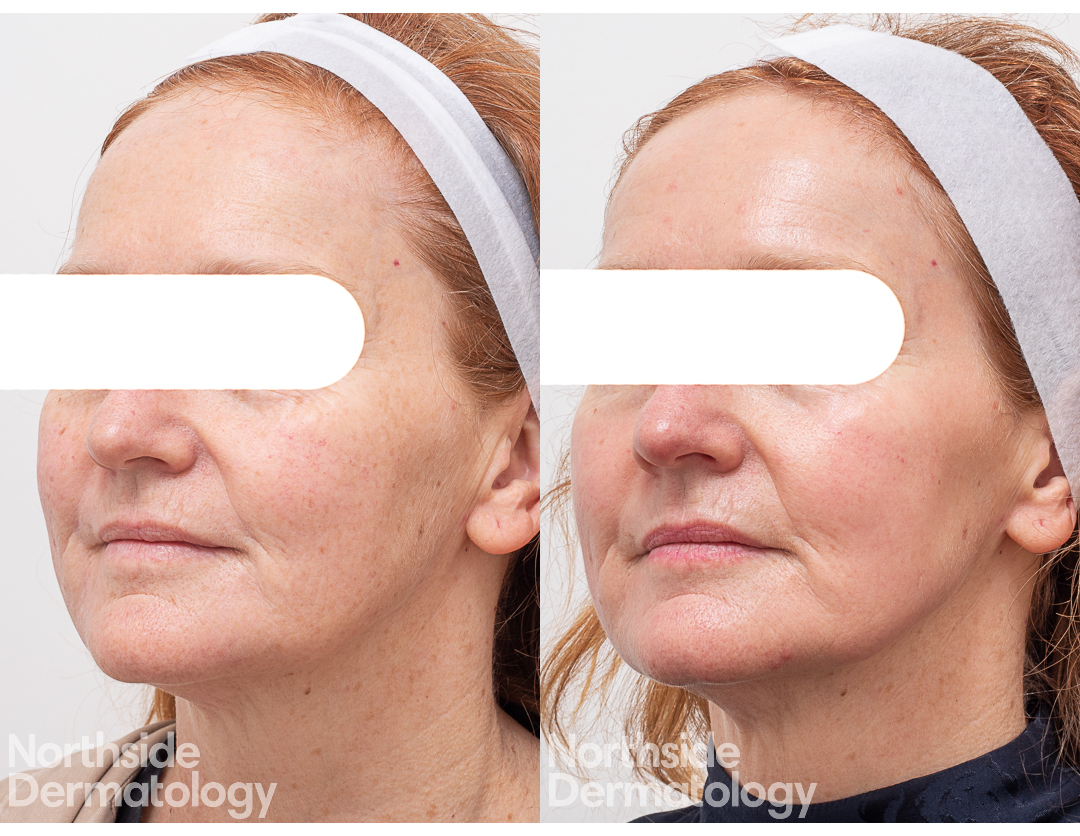
Before and 4 weeks after 1 treatment with LaseMD Ultra laser resurfacing (high density). Note the improvement in skin tone and pigmentation.

Before and 1 week after 1 treatment with LaseMD Ultra laser resurfacing (high density). Note the improvement in skin tone and pigmentation.
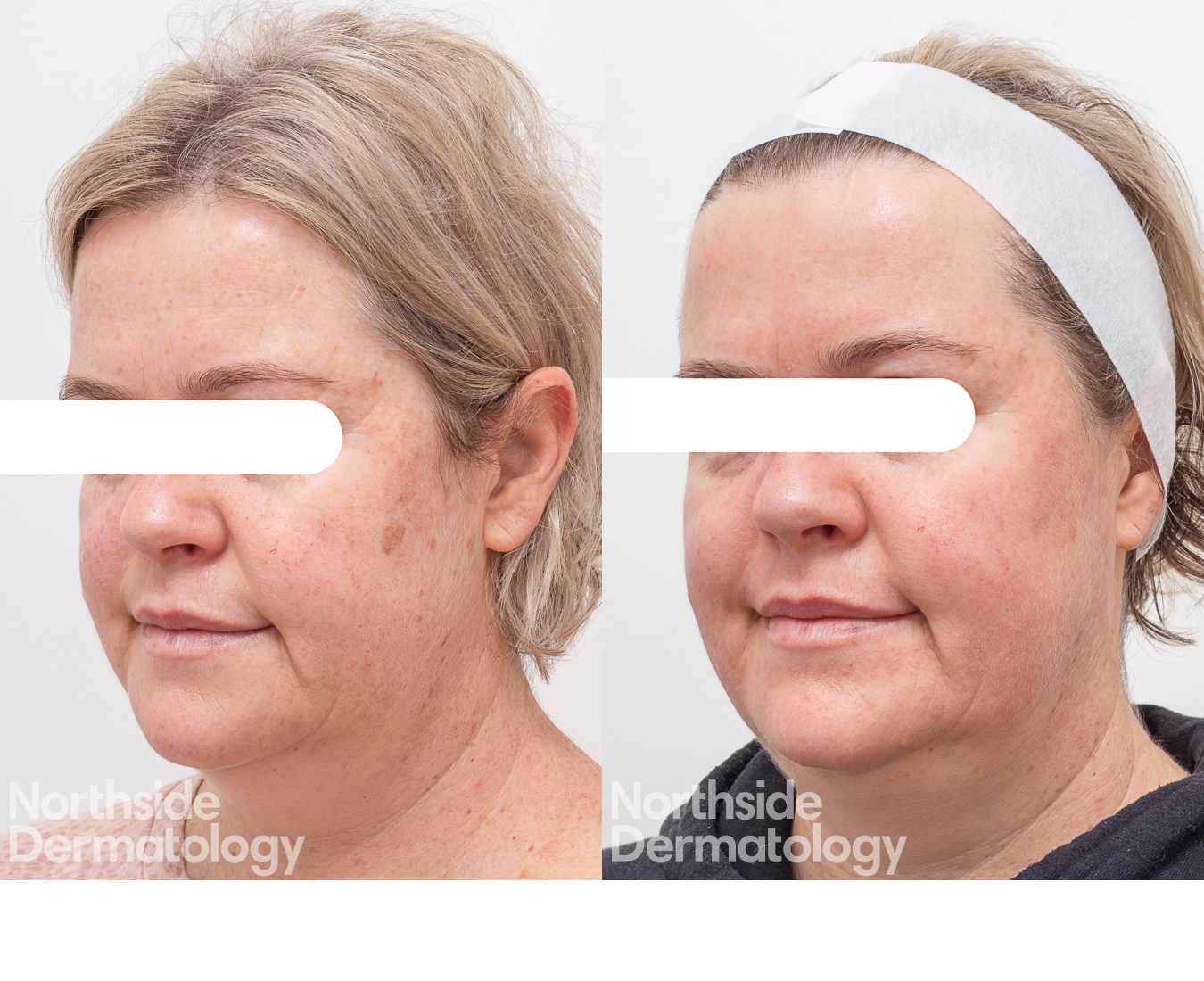
Before and 6 weeks after 1 treatment with LaseMD Ultra laser resurfacing (high density).
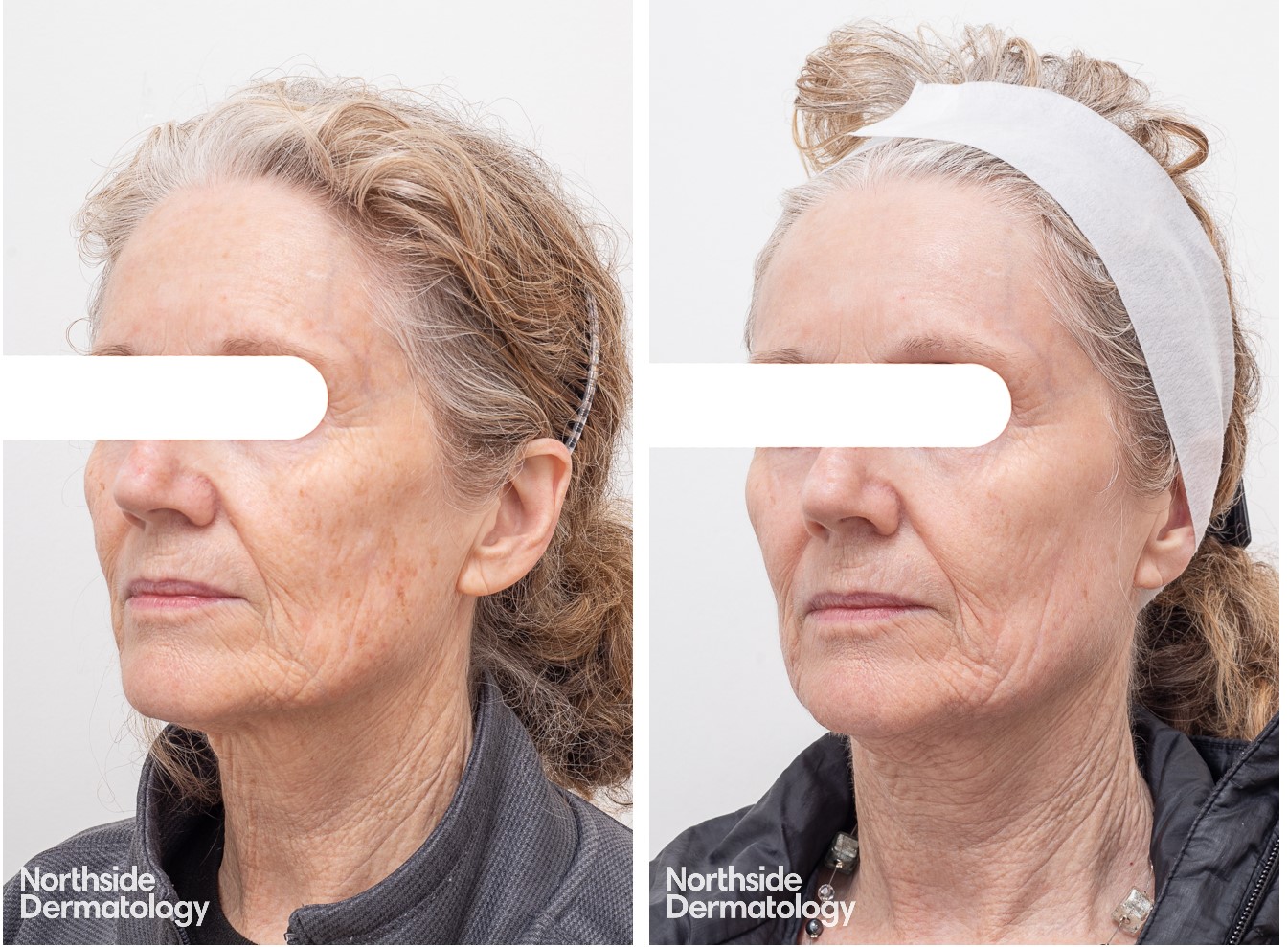
Before and 6 weeks after 3 treatments with LaseMD Ultra laser resurfacing (low density). Note the improvement in skin tone, pigmentation and rhytides.
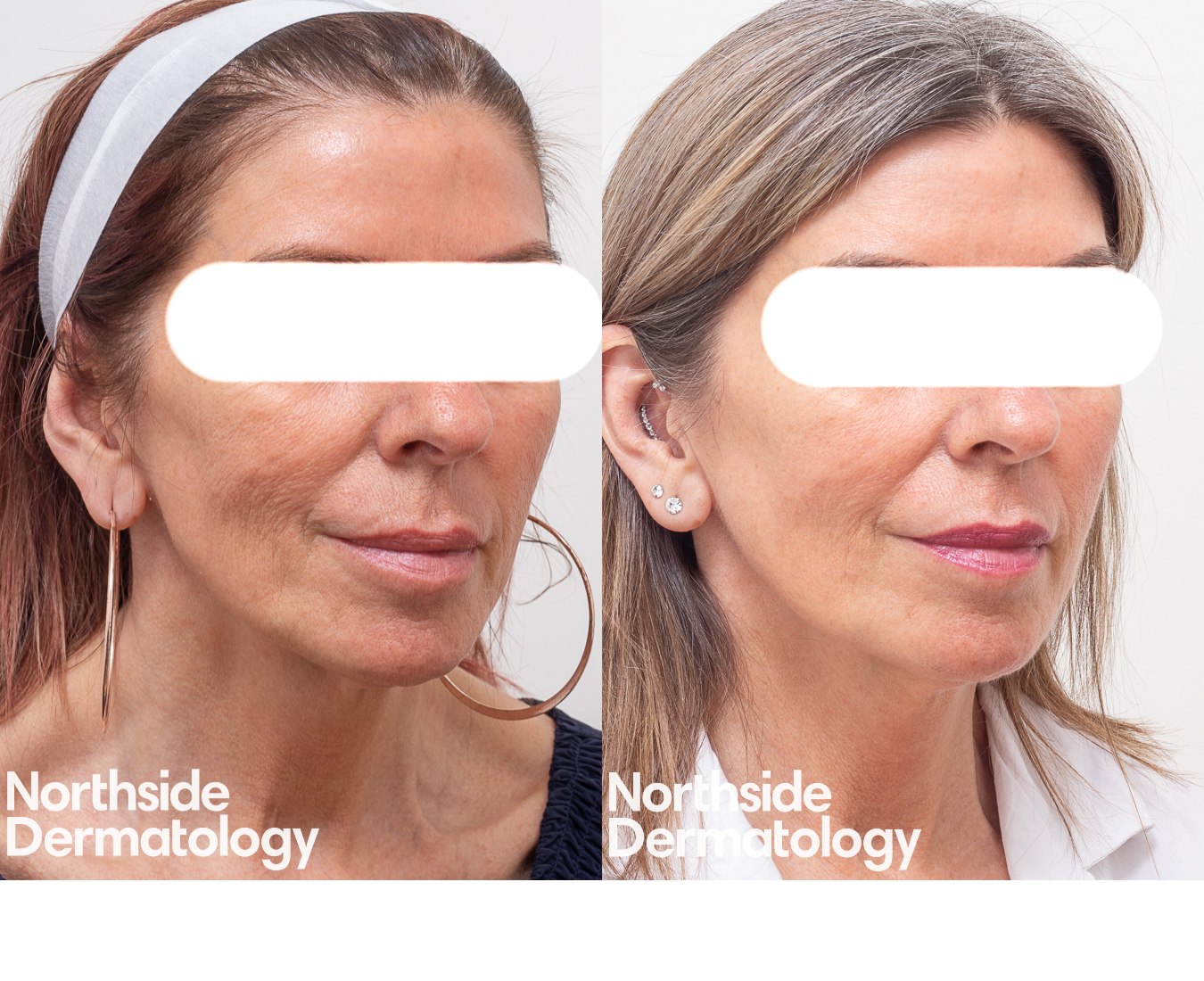
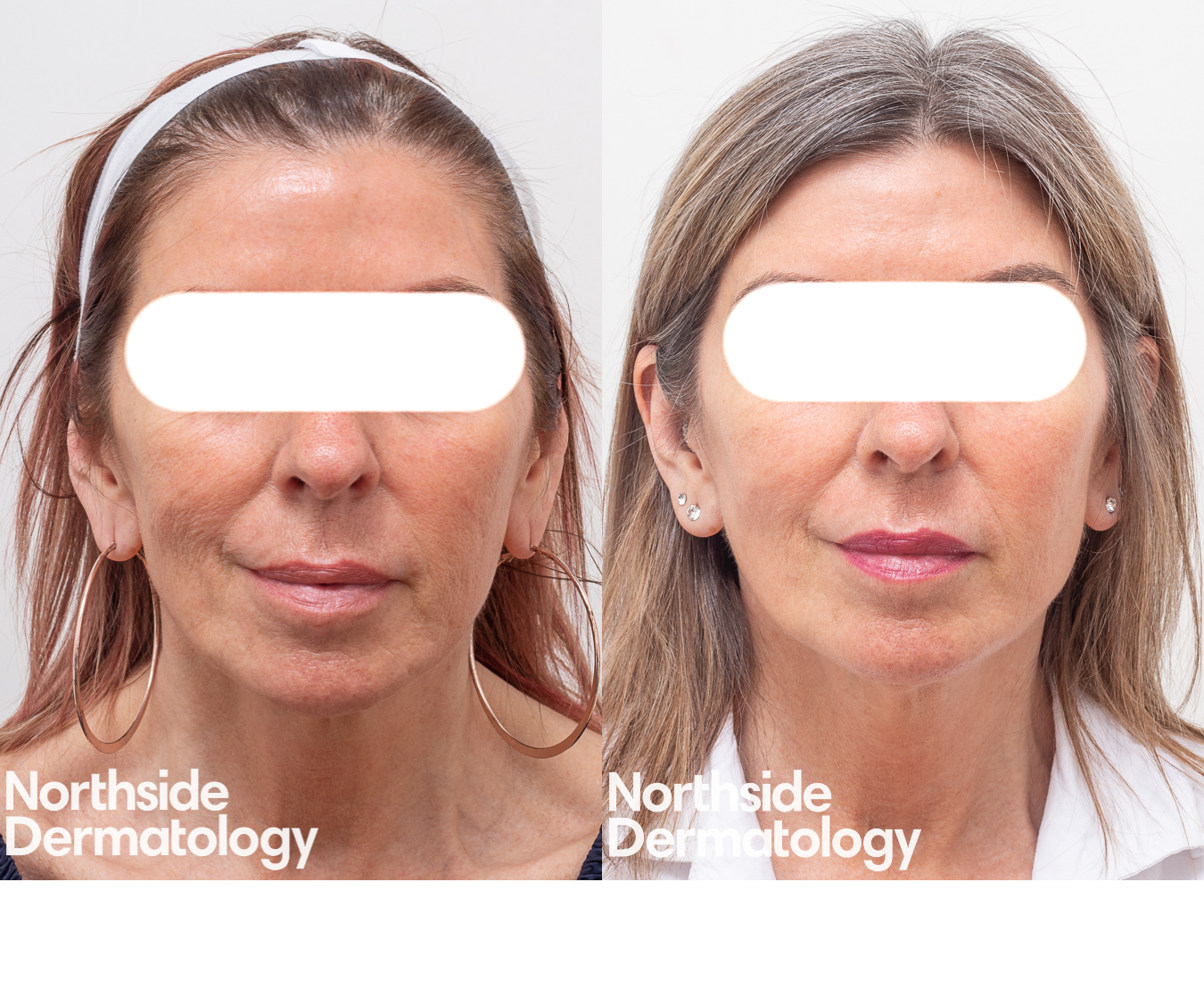
Before and 6 weeks after 1 treatment with LaseMD 1927nm laser and Co2 laser combination. No fillers used here. Note the improvement in skin texture and plumpness
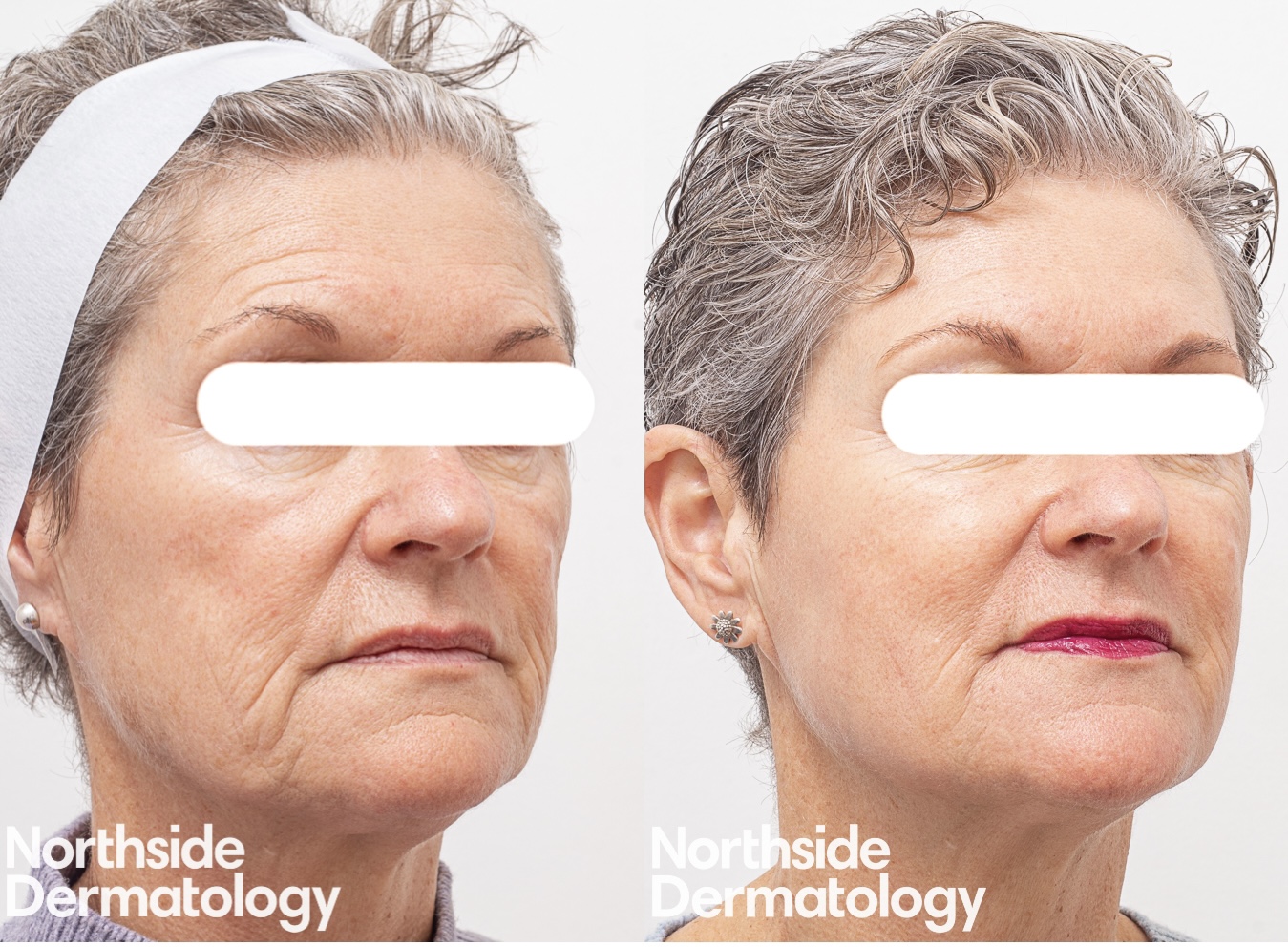
Before and 6 weeks after 1 treatment with LaseMD Ultra laser resurfacing (high density). Note the improvement in skin tone, pigmentation and rhytides.
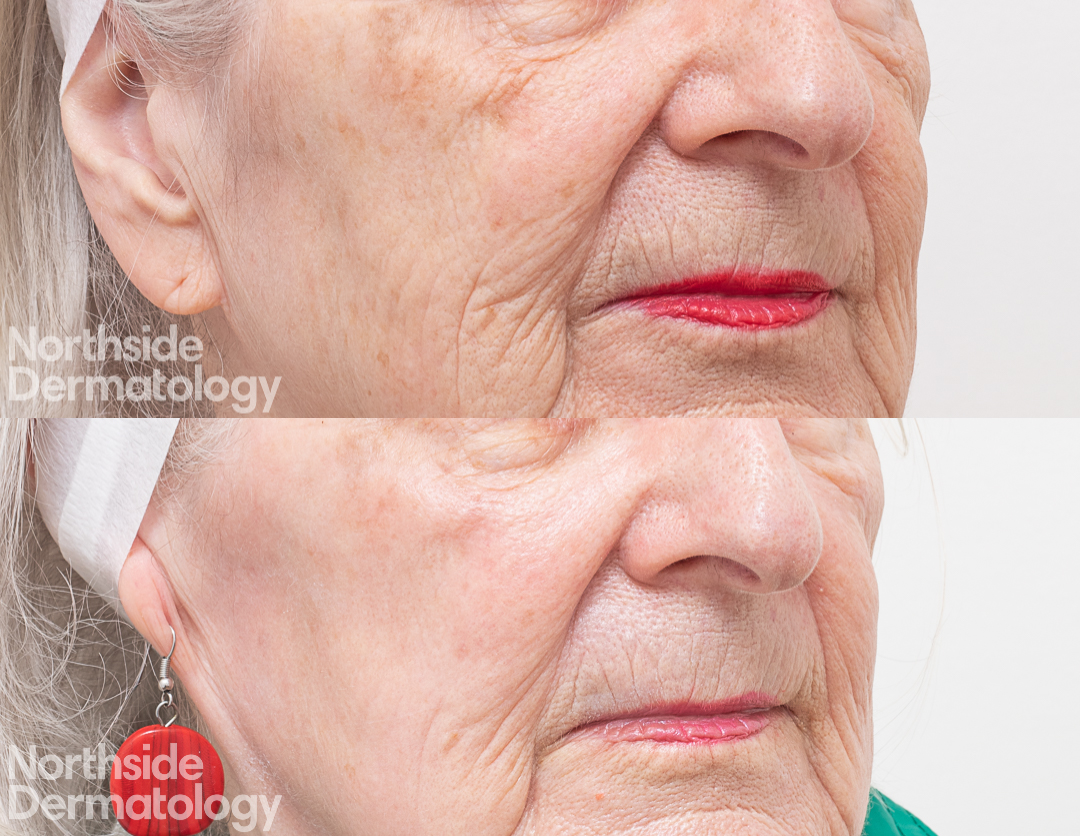
Actual patients of Northside Dermatology. Photos are taken with our standardised clinical photography system and published with the patient’s consent. Individual results may vary. A thorough consultation is required prior.
Before and 2 weeks after 1 treatment with high density LaseMD Ultra laser resurfacing for actinic keratosis (precancerous sun spots).
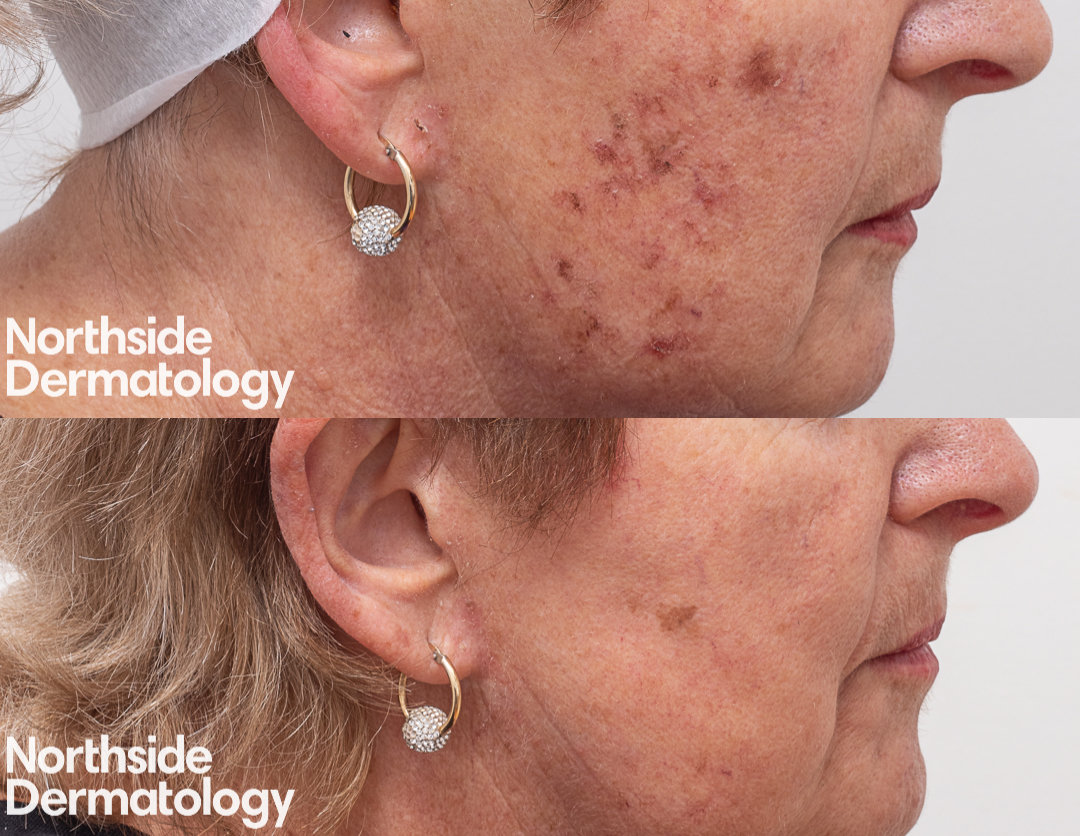
Actual patients of Northside Dermatology. Photos are taken with our standardised clinical photography system and published with the patient’s consent. Individual results may vary. A thorough consultation is required prior.
How Does LaseMD Ultra Work?
LaseMD Ultra is a 1927nm non-ablative fractional thulium laser.
A fractional laser treats only a fraction of skin tissue at a time, leaving the tissues around the treatment area intact to promote rapid healing. The controlled damage created by the laser stimulates the body’s own natural healing process, which replaces old and damaged cells with healthy new cells.
The 1927nm wavelength thulium laser plays an important role in dermatology. It causes a small wound just below the top layer of the skin (the epidermis), allowing it to treat a number of skin surface imperfections such as sun spots (precancerous), freckles, pigment and sun damage. The heating effect from the laser also results in collagen remodelling in the deeper layers of the skin (the dermis), hence the improvement in wrinkles and skin texture.
LaseMD Ultra is non-ablative, which means the top layer of skin remains intact during the treatment. It is an excellent low-downtime resurfacing treatment.
What Is LaseMD Ultra 1927 Good For?
- Sun spots (solar keratosis – precancerous sun spots)
- Brown spots (solar lentigines, freckles)
- Wrinkles
- Uneven skin tone and texture
- Scars and acne scars
- Melasma (as part of combination treatment with sun protection and prescription creams/medications/skin injections)
Which Parts of the Body Can LaseMD Ultra Treat?
LaseMD Ultra is primarily used on the face, neck, chest, arms and hands.
How Do I Prepare My Skin for Treatment With LaseMD Ultra?
Always use sunscreen, whether you are preparing for a laser treatment or not. Your dermatologist or dermal clinician may also recommend using a pigment inhibitor cream prior to a LaseMD Ultra treatment to reduce the chance of post-inflammatory hyperpigmentation.
What Is the LaseMD Ultra Treatment Like?
The dermal clinician performing your treatment may apply numbing cream before using the laser to make sure you are comfortable. If the device is calibrated to a lower intensity setting, topical anaesthesia may be unnecessary. You will feel some sensations as the LaseMD Ultra handpiece is passed over your skin. Patients typically describe the feelings as warmth and tingling. LaseMD Ultra treatment may range from five to 20 minutes or longer, depending on the size and number of areas being addressed.
Watch a LaseMD resurfacing treatment 1
Watch a LaseMD resurfacing treatment 2
What Is the Recovery Like After a LaseMD Ultra Treatment?
The fractionated approach means LaseMD Ultra’s downtime is reduced compared to more aggressive, non-fractional laser treatments. Once your session is over, your face will look like you have a sunburn. You’ll notice some redness and minor swelling that should lessen over the next day or so. You will be able to resume normal activities immediately, although most people choose to take physical activities lightly for one to two days. You can apply makeup starting the day after your treatment.
Over the next five to six days, your skin will develop a dry, sandpaper-like texture. This is normal and will resolve as your skin exfoliates, revealing the fresher, clearer skin below the surface. In most cases, full healing takes five to seven days. Patients who receive a more powerful treatment should expect a longer healing time.
You may start to see improvements in your skin soon after your LaseMD Ultra treatment. However, changes can continue for months as your collagen levels increase. Your skin will look tighter, younger, brighter and naturally healthy.
The following photos demonstrate the recovery process following a high density LaseMD Ultra resurfacing, before the treatment, immediately after the treatment, day 3 after treatment, and day 6 after treatment ( from top left, top right, bottom left and bottom right)
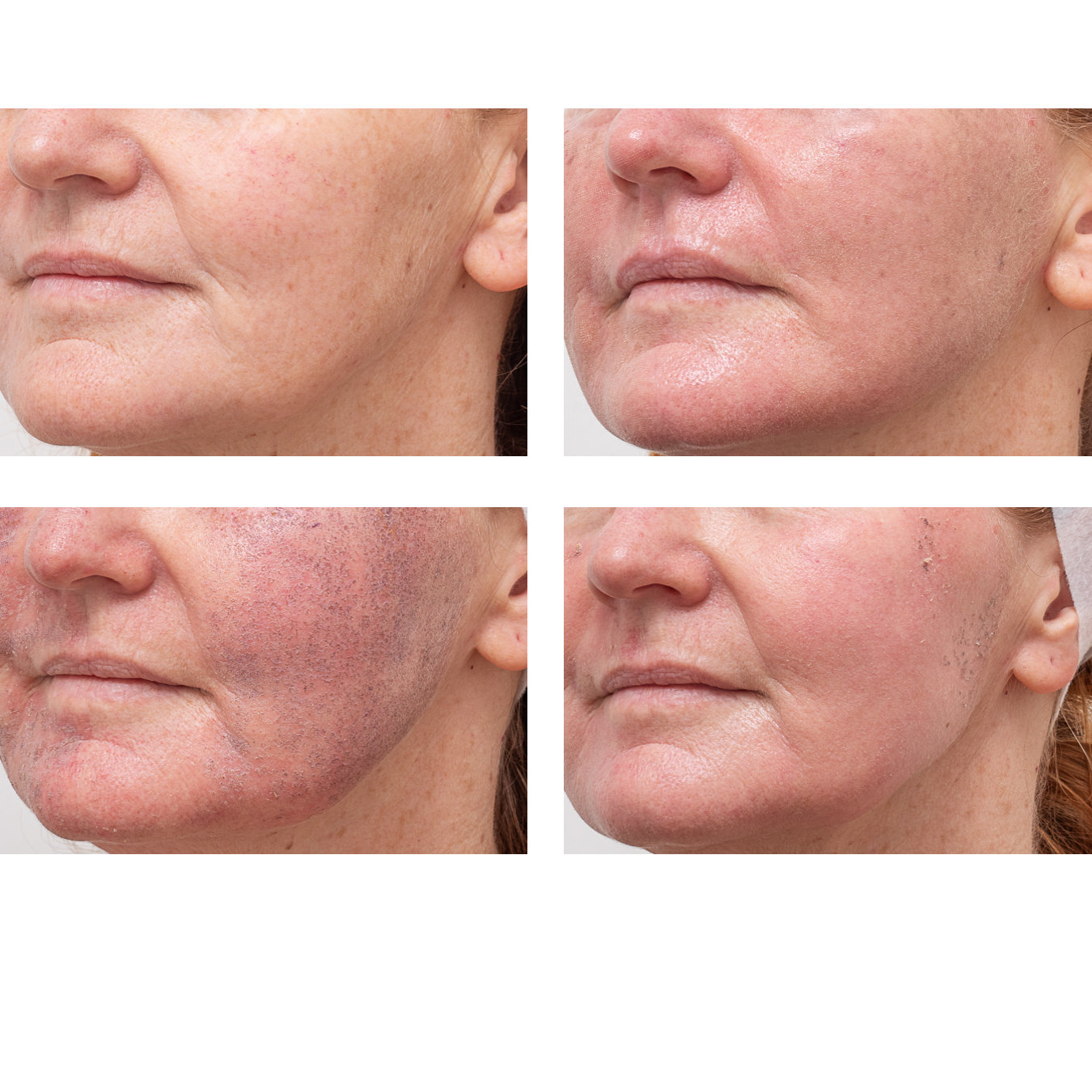
The following photos demonstrate the recovery process following a low to medium density LaseMD Ultra resurfacing, before the treatment, day 1 after the treatment, day 3 after treatment, and day 7 after treatment ( from top left, top right, bottom left and bottom right)
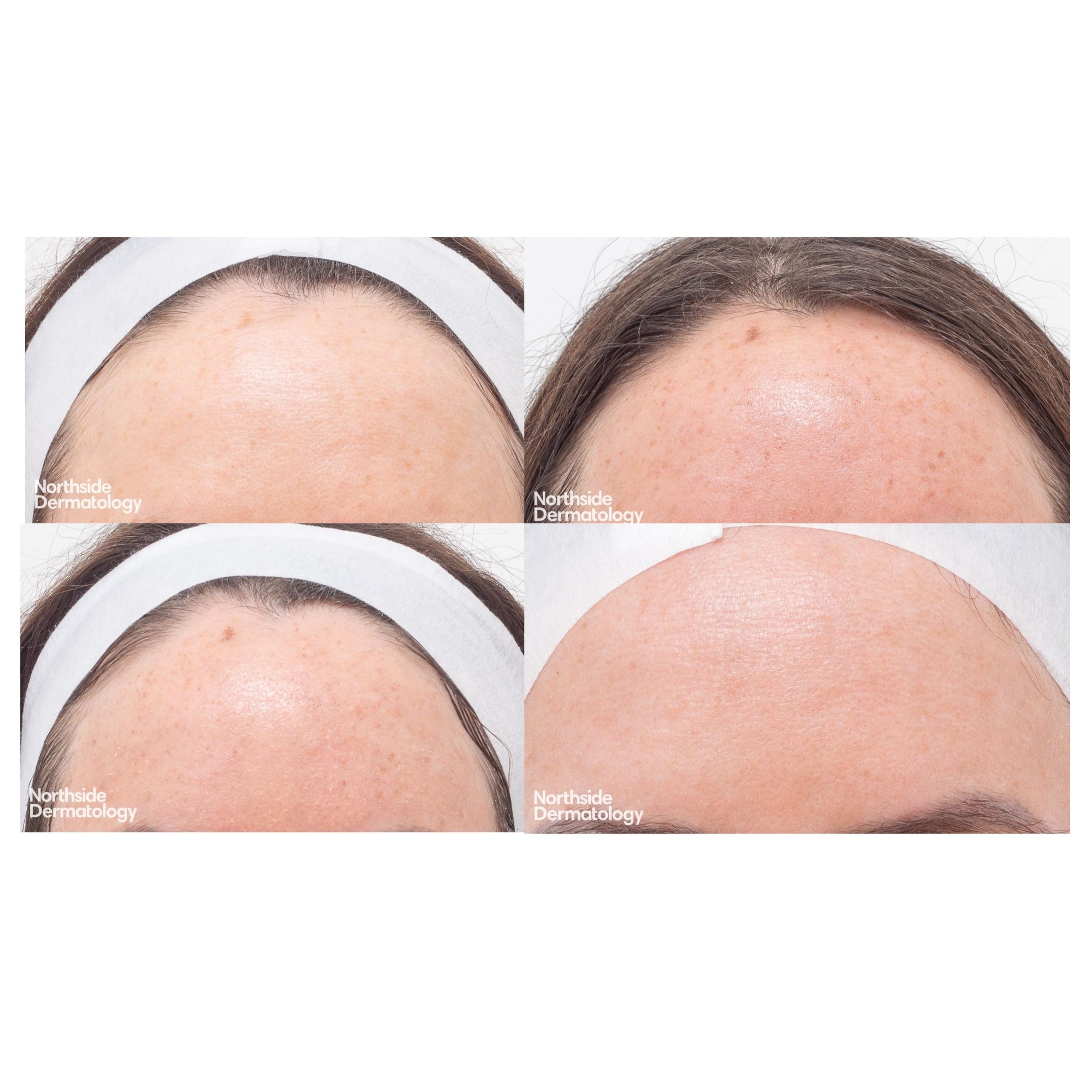
How Long Does the LaseMD Ultra Treatment Take?
LaseMD Ultra treatments range from 5 to 20 minutes depending upon your chosen treatment areas and desired results.
How Many LaseMD Ultra Treatments Will I Need?
Depending upon your expectations, you may see results after a single LaseMD Ultra treatment. Some skin conditions could require several visits to attain optimal results. Discuss your expectations with your dermatologist or dermal clinician. After reaching your goals, regular maintenance treatments can help you maintain a youthful complexion and minimise future skin damage.
Is LaseMD Ultra Safe for All Skin Types?
Yes! Anyone can benefit from LaseMD Ultra’s cutting-edge technology. For patients with skin of colour, the treating clinician would adjust the treatment density and intensity to reduce the chance of side effects.
What Are the Differences Between LaseMD Ultra and Fraxel?
LaseMD Ultra is the most powerful thulium laser at the moment, providing 20 watts of power compared to the 10 watts of power seen in the Fraxel laser. LaseMD Ultra allows your clinician to provide you with higher density treatment using both the traditional rolling technique (also seen in Fraxel) and a new stamping technique. The maximum density that LaseMD Ultra can provide is 90%, whereas the maximum density on the Fraxel is 70%.
LaseMD Ultra is more tunable (1-20mJ). This means it can provide a wide range of treatment intensities, from a very mild treatment to more aggressive treatment. Fraxel offers a more limited treatment intensity range (5-20mJ). Additionally, the LaseMD Ultra laser fires in a random mode, reducing the heat building up in the skin, leading to less swelling and less downtime post-treatment.
What Is the Difference Between LaseMD Ultra and LaseMD?
The LaseMD Ultra 1927nm laser is a more powerful, updated version of the old LaseMD system. Ultra builds on the strengths of its predecessor with more power for improved efficacy and a larger spot size that reduces treatment times.
What Is the Difference Between LaseMD Ultra and eCO2?
eCO2, produced by the same manufacturer as LaseMD Ultra, is an ablative CO2 laser. Ablative lasers treat complexion concerns by removing the top layers of the skin. LaseMD Ultra is a non-ablative laser that leaves the top layer of the skin intact. Non-ablative lasers are less invasive, more comfortable and have shorter recovery times. Ablative lasers involve more discomfort and downtime, but they are powerful and achieve results more rapidly. Both laser resurfacing options are safe in experienced hands and effective. The right type of laser for you depends on your needs and goals.
What Is the Hybrid Resurfacing Laser Treatment?
The dermatologists who consult at Northside Dermatology and team offer the option of combining LaseMD Ultra with a CO2 laser in one session. The rationale behind this combination treatment is that LaseMD Ultra treats skin surface concerns, whilst the CO2 laser addresses deeper wrinkles. Combining these lasers yields comprehensive skin rejuvenation.
What Other Combination Treatments Can I Have for Ageing Skin?
- Ultraformer and LaseMD Ultra for synergistic skin tightening, wrinkle reduction and pigment clearance
- Q-switched laser and LaseMD Ultra for the ultimate pigment-clearing experience
What Is the Dermatologist’s Perspective on LaseMD Ultra 1927nm?
The 1927nm thulium laser is very important in dermatology practice as it “lifts off” the top layer of the skin in a fractionated way to “mop up” skin surface imperfections like sun spots, sun freckles and wrinkles. At the same time, it also heats the dermis to improve skin texture. The patients love it because it addresses skin tone and texture in one treatment.
LaseMD Ultra is a low-downtime procedure. It is a particularly useful option for the sun-damaged patients with lots of solar keratoses, who can use it to treat both precancerous sun spots and skin texture simultaneously.
Find out how LaseMD Ultra can help you achieve clearer, younger-looking skin. Contact Northside Dermatology today on 03 8582 8688 to book an appointment.
Send us a message
Contact Us
Hours of Operation
Monday - Friday, 9am-5pm
Phone Number
Fax Number
Emails
Medical Enquiries:
reception@northsidedermatology.com.auLaser & Cosmetic Enquiries:
cosmetic@northsidedermatology.com.au